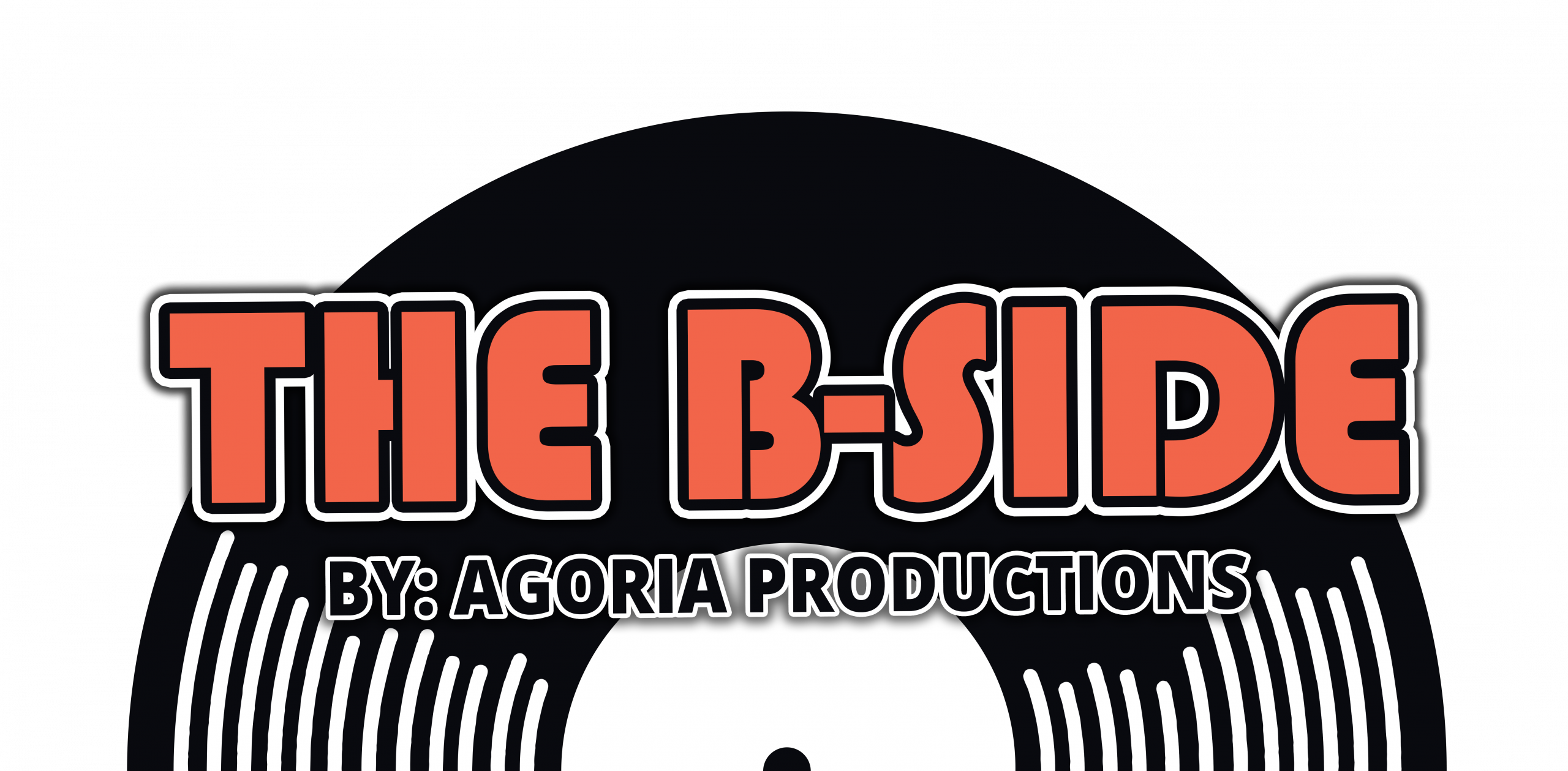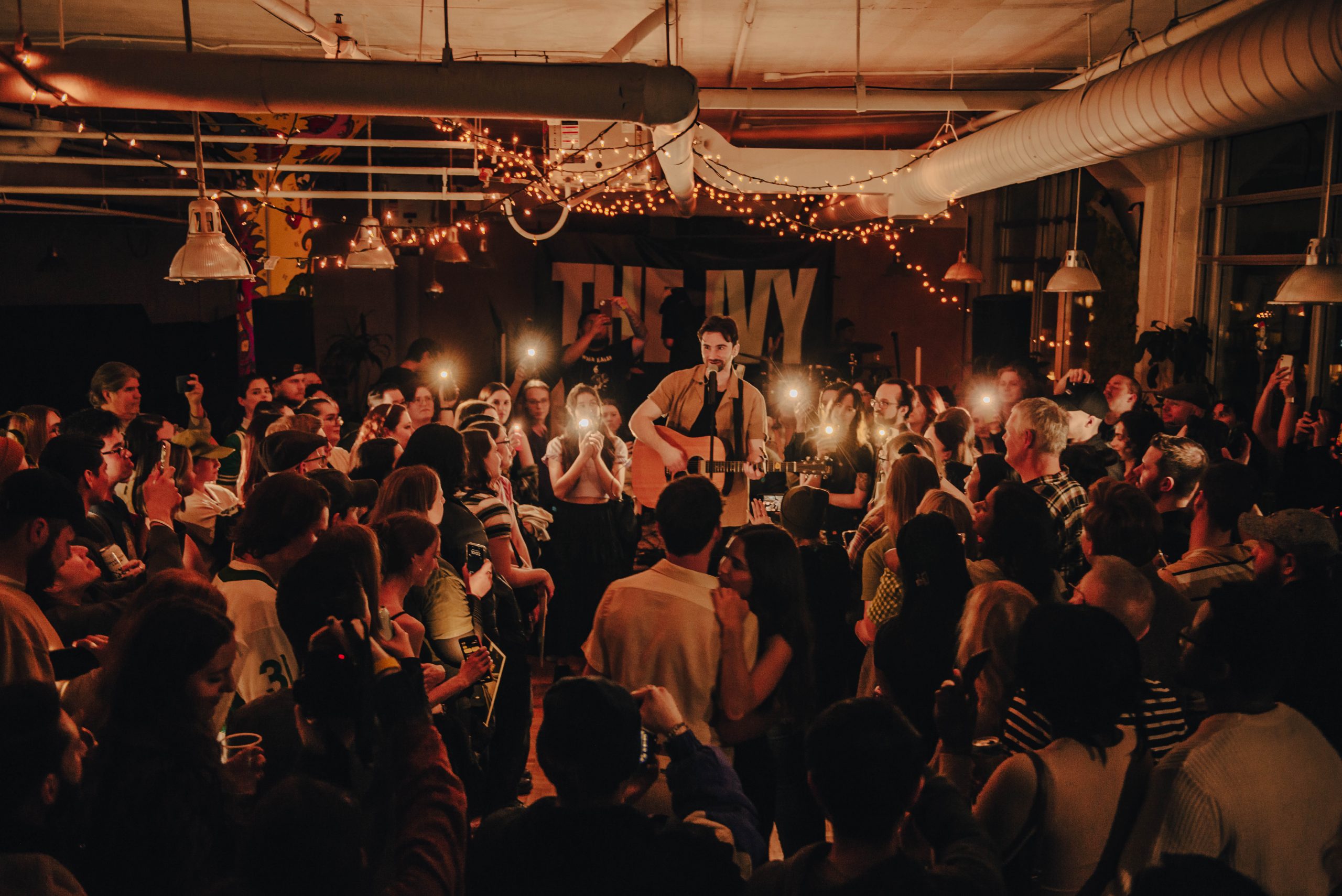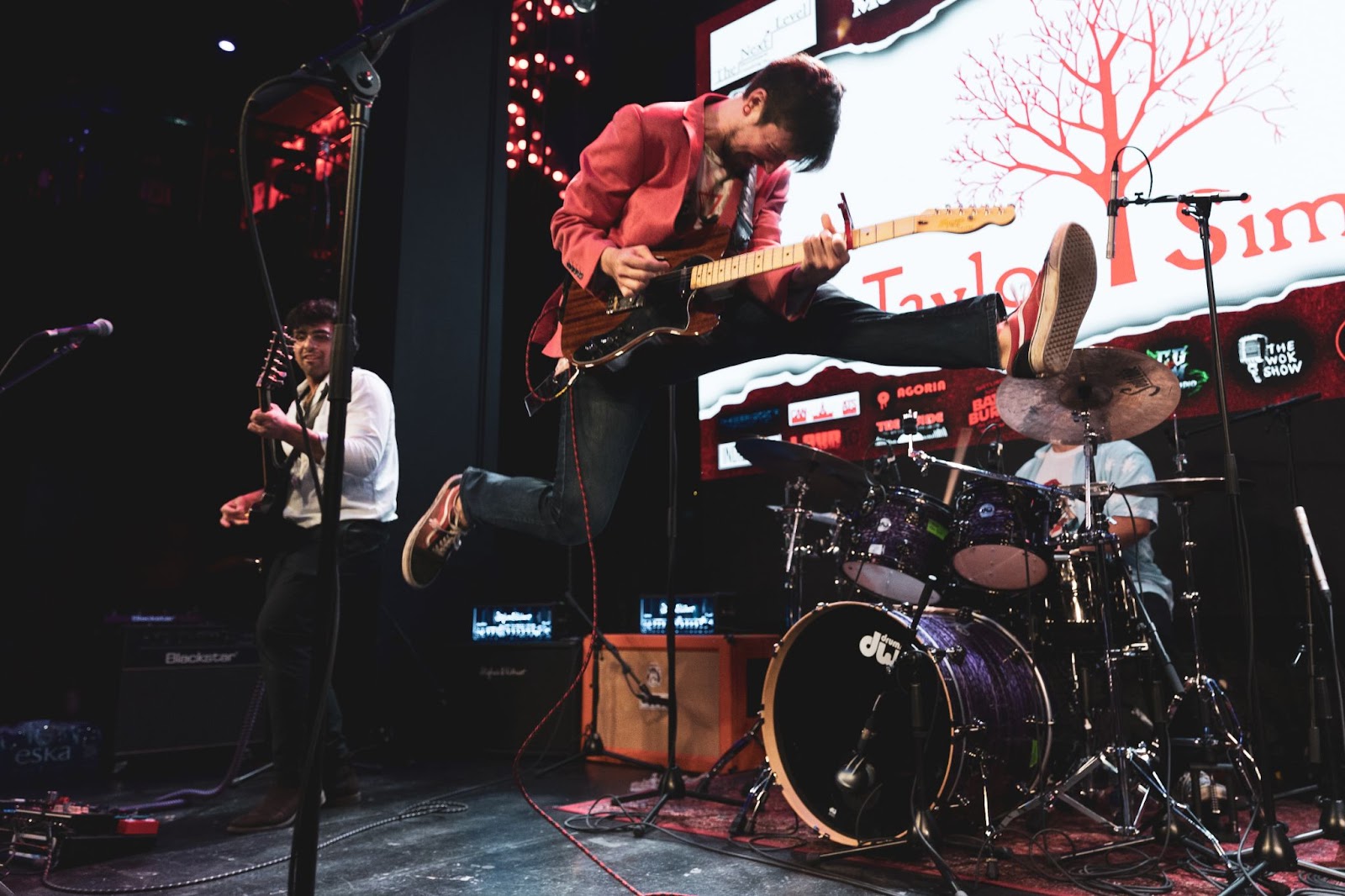Like Mad Max, but there’s white women walking dogs instead of rabid raiders
Alex Wardle, Static Point’s drummer, was surrounded by a padded cell of heavy moving blankets from floor to ceiling. In front of him was his drum set completely covered in microphones; two small diaphragm condensers as overheads, a snare mic over top, SM 57s covering the toms, a Beta 52 kick-in mic, a condenser as a kick-out and one last Zoom H6 to cover the room.
But even with the kit and its surroundings covered, “It was still a pretty ghetto setup. That’s probably why it didn’t sound amazing,” says Noah Van Hezewyk, Static Point’s lead guitarist.
Although they moved to Stockyard Studios in their hometown and current base of operations, Whitby, Ont., to record drums, the rest of their upcoming album was recorded in Van Hezewyk’s basement via direct input to a computer.
The band says they did this because it was cheaper, more flexible and less stressful.
“The studio was like a mad rush and it’s every minute that passes by you’re like, ‘oh my God, I’m paying for this minute.’ When you’re recording drums and you mess up a fill, it’s like oh shit, we just paid for that,” says Van Hezewyk.
Although Van Hezekwyk says home is better than the studio despite lacking that big studio professionalism vibe, things at home tend to spiral into perfectionism because there is infinite time.
“Everything took way longer than it probably had to be. But that’s maybe just the kind of people we are,” says Van Hezewyk.
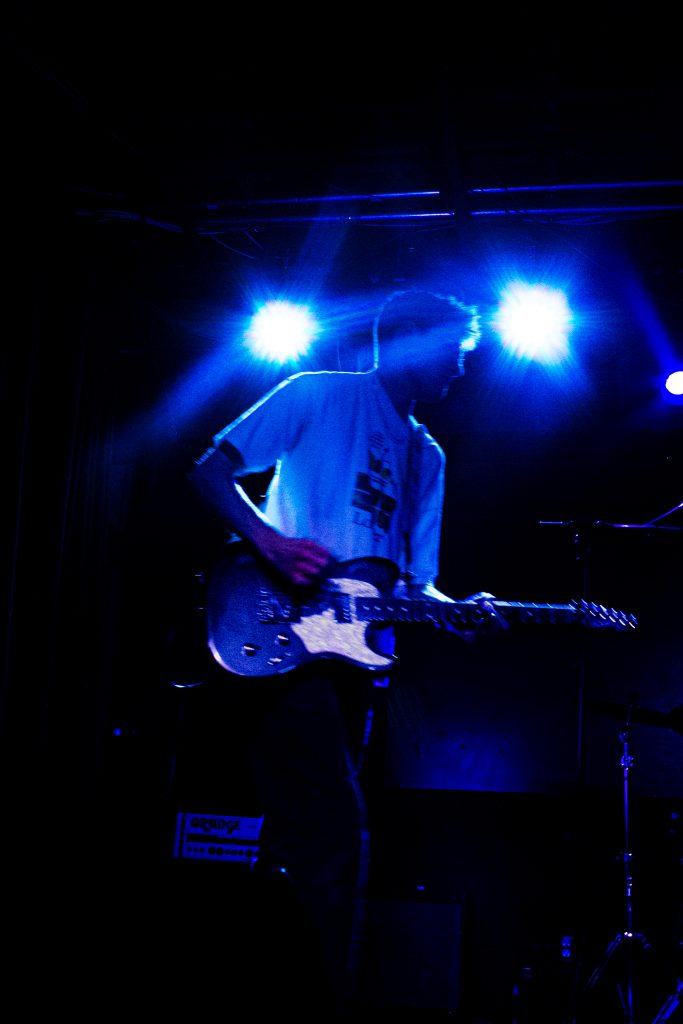
Van Hezewyk performing with Static Point at The Drake on July 18 (Lucas Bustinski/@LucasBustinski)
When I asked the band if they liked being based in Whitby in our initial interview before their July 18 performance at Toronto’s Drake Underground there was an exhale, then silence…followed by the cons of being based in the GTA suburb. But even so, Static Point was still able to record at home, distribute music and grow without the costs of living downtown.
To give a go at being a successful band from a suburb like Whitby, Ont., these are the kinds of issues that must be overcome. Certain sacrifices and business decisions have to be made despite the costs to compete against other bands.
Whitby has no conventional venue in a downtown consisting of eight blocks surrounding the Dundas St. and Brock St. intersection. It might have one guy with an acoustic guitar at Pearson’s Pub and for the musicians sake, hopefully never at the Tap and Tankard so they can avoid having to dodge a drunk hockey douche’s beer bottles.
The Durham Region coordinates sparse “Music in the Park,” evenings during summer but bands mostly rely on neighbouring places like Oshawa or Toronto for real places to perform.
I met Static Point after they played Kops Records in Oshawa, an unconventional place for a show but only one of three in the city for a band the size of Static Point, the others being The Atria and Bond St. Event Centre’s twotwotwo. Other Oshawa venues include The Biltmore Theatre and Bond St.’s main stage but have capacities beyond what Static Point can pull.
The band says living in Toronto to avoid the expensive and slow two-hour commute while immersed in an actual scene would be nice, but Whitby comes with benefits.
Static Point says Whitby made it easy for them to become a band because they all share the desire to do something in a town with nothing, already played instruments and have known each other since high school. Living in the same town also means they live close to each other, can coordinate their schedules easily and can use their homes as rehearsal spaces, avoiding paying to play.
In terms of performance they say the limited selection of venues in Durham means they get them more walk-ins locally versus Toronto. The band also believes playing a lower volume of shows might mean a higher turnout for when they do finally play Toronto.
“If your favourite band is playing your city every two months, you’re not going to go see them every single time because you can always wait for the next one,” says Adam Collings, Static Point’s vocalist and rhythm guitarist.
But no matter where you’re playing you still need to make people aware of the show they’ve done through social media and some old fashioned posters here and there.
The band says social media is great for bands, especially in smaller towns, as a tool to help growth but is a net loss because the ‘fans,’ become attracted to the personalities rather than the music.
“It’s like you can’t even just be an artist anymore that doesn’t say anything, you have to be this relatable influencer person to draw people in to listen to the music…It’s the ‘content-ification’ of music,” says Van Hezewyk. “People see music as this quick media sort of thing, I feel like it’s a bad thing in that way”
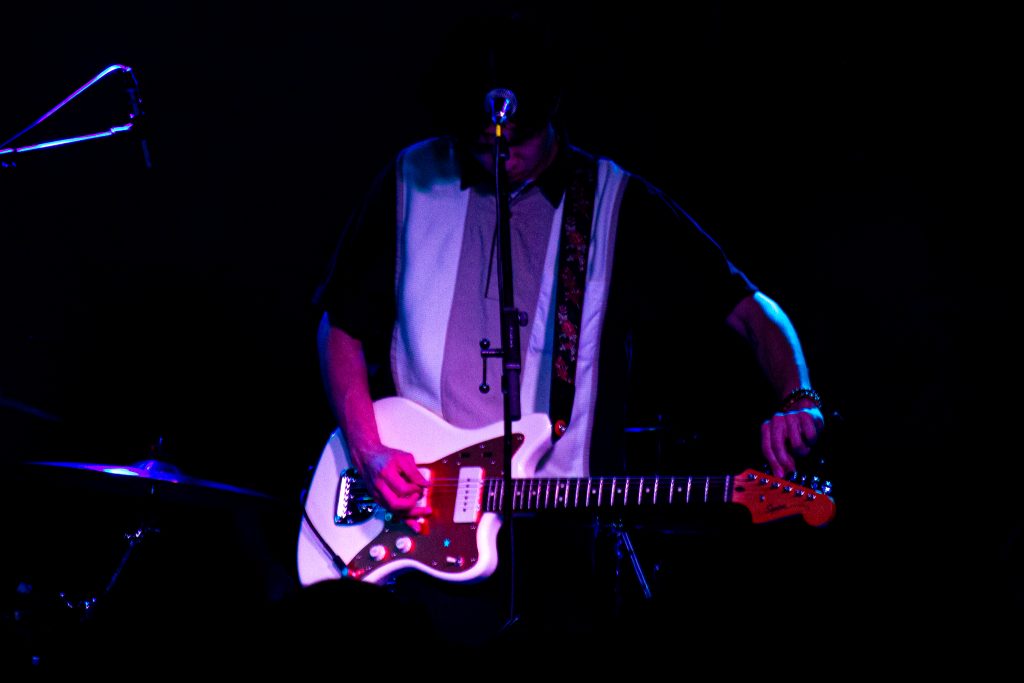
Collings tuning his guitar mid-show (Lucas Bustinski/@LucasBustinski)
Static Point says they hope to get to a point where they don’t have to invite all their friends and family and can create buzz with their music and live show experience and avoid being internet personalities.
“It’s very fulfilling seeing someone come to your show that you don’t know and liking you as opposed to the algorithm [feeding] your song to someone you don’t,” says Van Hezewyk.
To achieve this state, Static Point says a big help for bands in their position are official streaming service playlists.
These playlists and algorithms put the music directly in front of people while the band receives more royalties from playlist-based streams according to Indiy.com.
Static Point says they pay for a distribution service to put the song on Spotify, then write a pitch to be considered for a playlist.
“If an indie musician blows up, it’s probably because one of their songs got in that playlist. That playlist has so many listeners already so you’re just instantly thrown into the Spotify algorithm,” says Van Hezewyk.
Static Point currently stands at 74 monthly Spotify listeners and recently released “Midnight Car Ride,” on streaming services as a precursor to their full album release this October.
